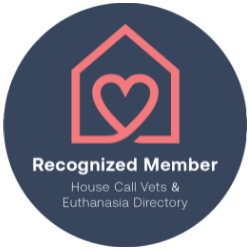





Decision Making FAQs
If you don’t see your question below, please contact us!
If you are reading this sentence, then your brain is trying to logically prepare for the day that you will have to say good bye to your best friend. Your heart, however, is not in the same place as your brain and will try to intervene with intense feelings such as denial and guilt. This rollercoaster that most of us experience is a push and pull between logic and emotion called anticipatory grief. One of the kindest things you can do right now is give yourself the space to understand and accept this overwhelming mental and emotional state you are in now. Read more about anticipatory grief here.
Veterinarians can be a trusted and impartial advisor most comfortably by observing your pet’s behavior at home, instead of when they are scared or excited in an exam room. Therefore, if you are still struggling with the decision, I strongly encourage you to take advantage of quality-of-life consultations. While I have offered these in the past, I have decided to devote my working time and energy in creating farewell experiences because I am a one doctor practice.
The first step is making sure you can quantify how you think your pet is doing in their day to life. I recommend that all family members score the pet using the following tools (you may be surprised at your family member’s answers):
- The HHHHHMM Quality of Life Scale can be found here. This scale is used by many clinical and hospice veterinarians and is a more quantitative way to evaluate your pet’s quality of life.
- Another scale that I encourage families to independently score and discuss together is this Quality-of-Life Scale, because it takes into consideration not only your pets happiness, but your concerns for the future as well. I find this scale is best to score and discuss with each other when there are multiple people involved in the decision-making process.
I would like you to know that if you choose Fond Farewell, the decision to euthanize will be between a minimum of 2 people – me and you. I will never perform a euthanasia if I didn’t think it was a kind and appropriate choice for you and your pet. This work is both an honor and a privilege that I do not take lightly.
One thing that most pet lovers wish for their pet is to pass peacefully in their sleep, taking the burden of watching them struggle or making a tough decision off of their shoulders. The fact is, this peaceful passing is rarer than you may think. Similar to humans, the majority of animals have a period of deterioration before they pass. As a veterinarian who has witnessed unassisted transitions in animals, I can say with confidence that a natural passing does not necessarily mean a peaceful and pain-free death. Many families that have committed to the idea of a natural passing for their pet at home will often end up rushing into a clinic because their pet has started to suffer during the process, having their last memory in the one place that they were trying to avoid.
The advantage of making the unnatural and painful decision to provide a humane euthanasia for your pet is that they will be pain free, fear free, and surrounded by the people that love them.
As daunting as it may sound to have your pet transition at home, it is one of the kindest gifts you can ever give them. I have experience providing peaceful passings for thousands of pets in a home environment and will come prepared for everything that will happen.
Sharing your final farewell with your pet at home has benefits for both you and your pet, including:
- Less stress and anxiety for your family and your pet. Allowing your pet to be in their familiar surroundings is a comforting gift that just feels right in such a difficult moment.
- Accommodating your family. The ability to schedule on short notice, including after hours and weekends, allows more family members to be present than in a clinic. Video calls are encouraged for those that want to be a part of the farewell but cannot be physically present. Good-byes take time, and I can ensure that no one feels rushed during our time together.
- Personalizing the moment. Being at home and working at your family and pet’s pace means we can create meaningful moments. Many families will play music, share memories, and have their pet’s favorite foods and toys incorporated into their farewell.
- For a more in depth look at the advantages of home euthanasia, feel free to check out our blog post about the topic here.











